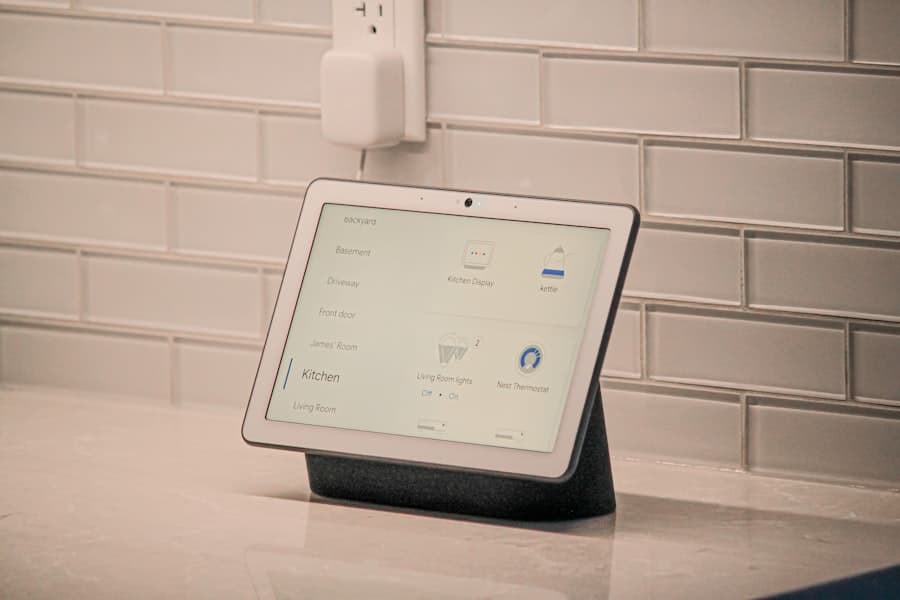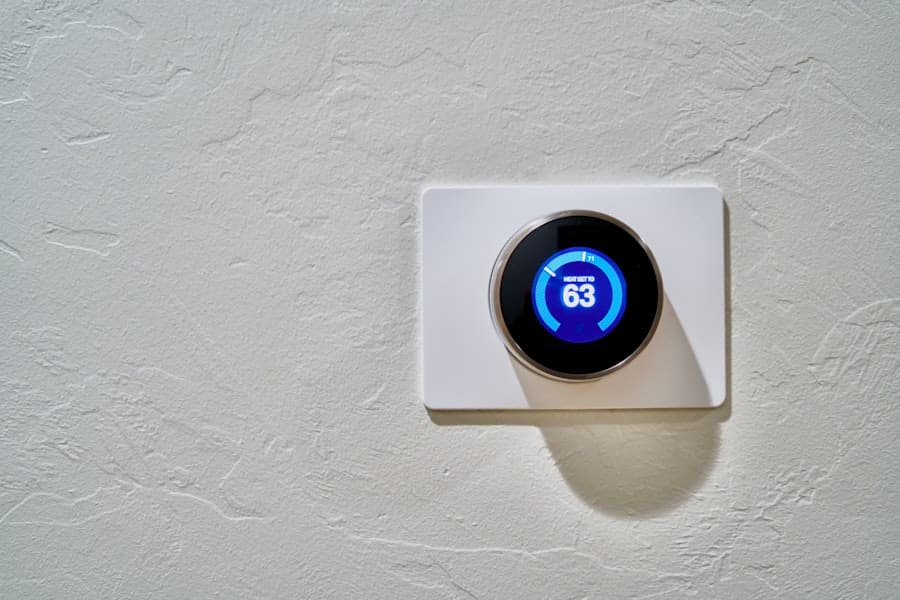In recent years, artificial intelligence (AI) has made significant strides, particularly in the realm of personal assistance. AI-powered assistants, such as Amazon’s Alexa, Google Assistant, and Apple’s Siri, have become integral components of modern households. These digital companions are designed to facilitate a variety of tasks, from managing schedules and controlling smart home devices to providing information and entertainment.
The rise of AI-powered assistants is not merely a trend; it represents a fundamental shift in how technology integrates into our daily lives. As these systems become more sophisticated, they are increasingly capable of understanding and responding to human needs in a personalized manner.
This capability is largely driven by advancements in machine learning and natural language processing, which enable these assistants to learn from user interactions and adapt over time. As a result, AI-powered assistants are not just tools; they are evolving entities that can enhance the quality of life for users by anticipating their needs and preferences.
Key Takeaways
- AI-powered assistants are revolutionizing household management by providing personalized recommendations and suggestions based on data analysis.
- These assistants collect and analyze data from various sources to understand household preferences and adapt to changes over time.
- The potential benefits of AI-powered assistants in the home include improved efficiency, convenience, and time-saving for household tasks.
- Addressing privacy and security concerns is crucial for the widespread adoption of AI-powered assistants in household management.
- The future of AI-powered assistants in household management holds promise for further advancements in personalization and seamless integration into daily routines.
Understanding Household Preferences
Understanding Household Preferences
Understanding household preferences involves analyzing various factors, including the demographics of the household members, their daily routines, and their individual interests. For example, an AI assistant might track the times when family members typically wake up or go to bed, their preferred meal times, or even their favorite types of music.
Creating a Comprehensive Profile
This data collection is not merely about gathering information; it is about creating a comprehensive profile that reflects the lifestyle and needs of the household. By doing so, AI-powered assistants can offer suggestions that resonate with users on a personal level, enhancing user satisfaction and engagement.
Personalized Support and Recommendations
By recognizing these distinctions, AI assistants can provide more relevant and useful support. For instance, a family with young children may prioritize safety features and educational content, while a tech-savvy household might focus on automation and integration with various smart devices.
How AI-Powered Assistants Collect and Analyze Data

The process by which AI-powered assistants collect and analyze data is multifaceted and involves several sophisticated technologies. At the core of this process is machine learning, which enables these systems to learn from user interactions over time. When a user engages with an assistant—whether by asking a question, setting a reminder, or controlling a smart device—the assistant records this interaction as data.
This data is then processed to identify patterns and trends that inform future responses. In addition to direct interactions, AI assistants can also gather data from connected devices within the smart home ecosystem. For instance, if a user frequently adjusts the thermostat to a specific temperature during certain hours, the assistant can learn this preference and automatically adjust the settings in the future.
Furthermore, many AI assistants utilize cloud computing to store and analyze vast amounts of data securely. This allows them to leverage advanced algorithms that can process information quickly and efficiently, leading to more accurate predictions and recommendations tailored to individual users.
Personalizing Recommendations and Suggestions
One of the most compelling features of AI-powered assistants is their ability to personalize recommendations based on user data. This personalization goes beyond simple responses; it encompasses a wide range of functionalities that enhance user experience. For example, if an assistant knows that a user enjoys cooking Italian cuisine, it might suggest recipes or cooking tips related to that preference when the user expresses interest in preparing a meal.
This level of personalization not only makes interactions more engaging but also fosters a sense of connection between the user and the technology. Moreover, personalization extends to various aspects of daily life. AI assistants can curate playlists based on listening habits, recommend movies or shows aligned with viewing history, or even suggest shopping items based on past purchases.
The ability to provide tailored suggestions creates a more intuitive experience for users, as they feel understood and catered to by their digital assistant. This dynamic relationship between users and AI technology exemplifies how advancements in artificial intelligence can lead to more meaningful interactions in everyday life.
Adapting to Changes in Household Preferences
As households evolve over time—whether through changes in family structure, lifestyle shifts, or new interests—AI-powered assistants must be capable of adapting to these changes seamlessly. This adaptability is crucial for maintaining relevance and ensuring that the assistant continues to meet the needs of its users. For instance, if a family welcomes a new baby, the assistant might adjust its recommendations to include parenting tips or baby care resources.
Similarly, if household members develop new hobbies or interests, the assistant can learn from these changes and provide relevant content or suggestions. The adaptability of AI assistants is largely facilitated by their continuous learning capabilities. Through ongoing interactions with users, these systems can refine their understanding of preferences and adjust their responses accordingly.
This means that an assistant is not static; it evolves alongside its users, becoming more attuned to their needs over time. Such flexibility enhances user satisfaction and fosters long-term engagement with the technology.
Potential Benefits of AI-Powered Assistants in the Home

Efficient Task Management
One significant advantage is increased efficiency in managing daily tasks. By automating routine activities—such as setting reminders, scheduling appointments, or controlling smart home devices—these assistants free up valuable time for users. This efficiency can lead to improved productivity and reduced stress levels as individuals can focus on more meaningful activities rather than mundane chores.
Enhanced Communication
AI-powered assistants can enhance communication within households. For example, family members can use voice commands to send messages or make calls without needing to pick up their phones. This hands-free functionality is particularly beneficial in busy households where multitasking is common.
Improved Coordination and Connection
Furthermore, these assistants can facilitate coordination among family members by sharing calendars or reminders about important events, ensuring that everyone stays informed and connected.
Addressing Privacy and Security Concerns
Despite the many advantages offered by AI-powered assistants, concerns regarding privacy and security remain prevalent among users. The collection of personal data raises questions about how this information is stored, used, and protected. Users often worry about unauthorized access to their data or potential misuse by third parties.
As such, it is essential for developers of AI technology to prioritize transparency and security measures in their products. To address these concerns, many companies have implemented robust security protocols designed to safeguard user data. This includes encryption methods that protect information during transmission and storage as well as strict access controls that limit who can view or use this data.
Additionally, users are often provided with options to manage their privacy settings actively—such as opting out of certain data collection practices or deleting stored information when desired. By fostering an environment of trust through transparency and security measures, developers can help alleviate user concerns while promoting the benefits of AI-powered assistants.
The Future of AI-Powered Assistants in Household Management
Looking ahead, the future of AI-powered assistants in household management appears promising as technology continues to advance at an unprecedented pace. Innovations in natural language processing will likely lead to even more sophisticated conversational capabilities, allowing these assistants to engage in more nuanced dialogues with users. As they become better at understanding context and intent, interactions will feel increasingly natural and intuitive.
Moreover, as smart home technology continues to proliferate, AI-powered assistants will play an even more central role in managing interconnected devices within households. The integration of IoT (Internet of Things) devices will enable these assistants to control everything from lighting and heating systems to security cameras and appliances seamlessly. This interconnectedness will create a cohesive ecosystem where users can manage their homes effortlessly through voice commands or mobile applications.
As AI technology evolves further, we may also see advancements in emotional intelligence within these systems. Future AI-powered assistants could potentially recognize emotional cues from users’ voices or behaviors, allowing them to respond empathetically during interactions. This capability would deepen the relationship between users and their digital companions, transforming them into not just functional tools but also supportive allies in daily life.
In conclusion, AI-powered assistants are poised to revolutionize household management by providing personalized support tailored to individual preferences while addressing privacy concerns through robust security measures. As technology continues to advance, these digital companions will become increasingly integral to our lives, enhancing efficiency and fostering deeper connections within households.
In a related article, How Smartwatches Are Revolutionizing the Workplace, the focus shifts to the impact of wearable technology on productivity and efficiency in professional settings. Just as AI-powered assistants are learning household preferences to streamline daily tasks, smartwatches are providing workers with convenient access to notifications, communication tools, and health tracking features. The integration of these technologies showcases the ongoing evolution of how we interact with and utilize digital tools in various aspects of our lives.
FAQs
What are AI-powered assistants?
AI-powered assistants are virtual or digital assistants that use artificial intelligence to understand and respond to human commands or questions. They can perform tasks such as setting reminders, answering questions, and controlling smart home devices.
How do AI-powered assistants learn household preferences?
AI-powered assistants learn household preferences by analyzing data from interactions with household members and smart home devices. They use machine learning algorithms to understand patterns and preferences, and then tailor their responses and actions accordingly.
What types of household preferences can AI-powered assistants learn?
AI-powered assistants can learn a wide range of household preferences, including preferred temperature settings, lighting preferences, music and entertainment choices, preferred brands for shopping, and even preferred language or communication style.
How do AI-powered assistants use household preferences to improve user experience?
AI-powered assistants use household preferences to personalize interactions and provide more relevant and helpful responses. For example, they can adjust smart home devices to preferred settings, suggest personalized recommendations for entertainment or shopping, and anticipate user needs based on past preferences.
What are the potential benefits of AI-powered assistants learning household preferences?
The potential benefits of AI-powered assistants learning household preferences include improved convenience, efficiency, and personalization of smart home experiences. By understanding and adapting to household preferences, these assistants can enhance the overall user experience and make daily tasks easier and more enjoyable.

